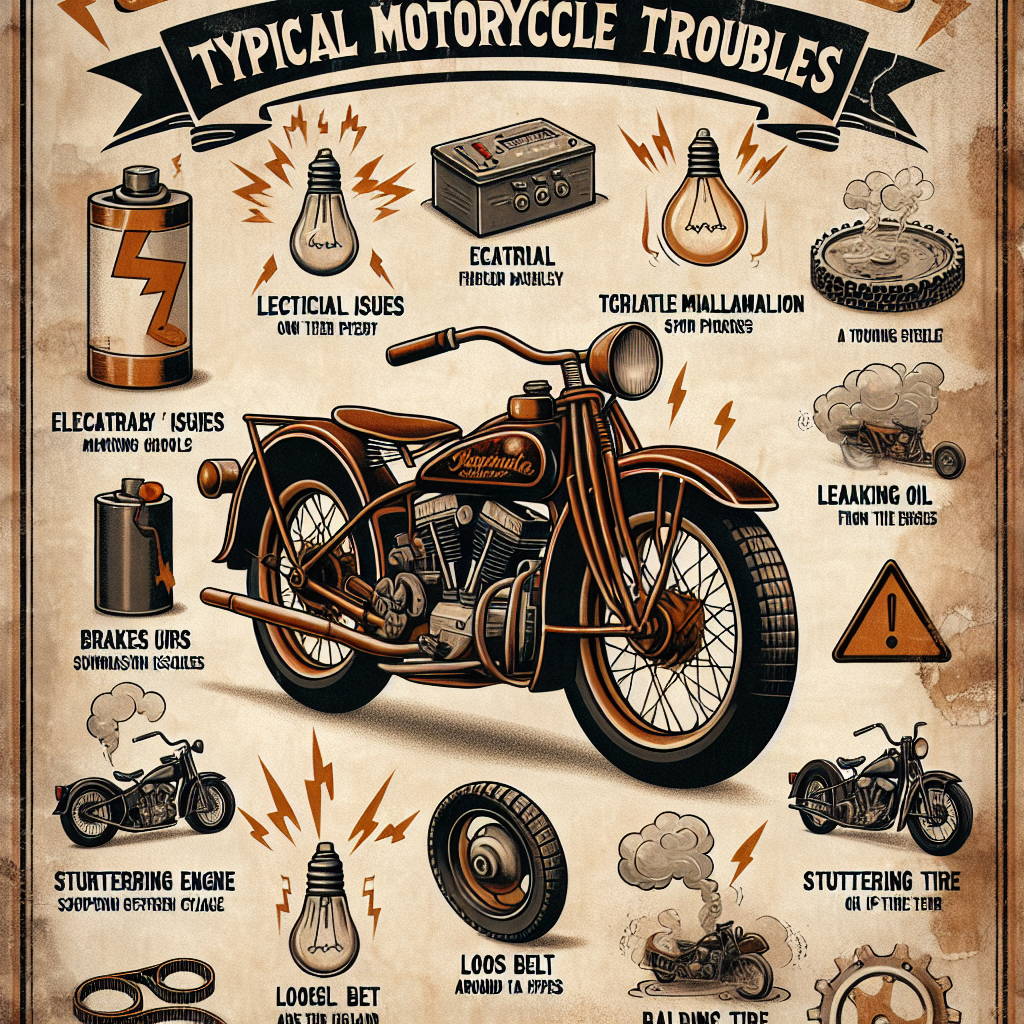
Introduction
Harley-Davidson Street Bikes are renowned for their robust performance and iconic style. However, like all motorcycles, they can encounter issues that require troubleshooting and maintenance. This guide will help you identify and resolve common problems, ensuring that your bike stays in optimal condition for every ride.
Common Issues
Here are some common issues Harley-Davidson Street Bike owners often face:
- Battery Issues: Frequent replacements, inability to hold a charge.
- Electrical Problems: Malfunctioning lights, indicators, dashboard displays.
- Engine Overheating: Often due to low oil, cooling system issues, or heavy traffic.
- Oil Leaks: Typically from the primary and transmission cases.
- Braking System Malfunctions: Spongy or unresponsive brakes.
- Belt or Chain Tension and Alignment Issues: Unusual noises, loss of power, unusual tire wear.
- Fuel System Problems: Difficulty starting, rough idling, stalling.
- Suspension Issues: Abnormal bouncing, sagging, leaks.
- Tire Wear: Uneven or premature wearing.
Maintenance Tips
Preventative maintenance can help avoid many of these issues:
- Battery:
- Regularly check connections and fluid levels.
- Clean terminals and upgrade if frequent replacements occur.
- Electrical System:
- Perform routine checks on lights, indicators, and dashboards.
- Engine:
- Maintain proper oil levels and change oil as recommended.
- Ensure cooling system is leak-free and radiator is clean.
- Oil Leaks:
- Inspect for leaks in primary and transmission cases.
- Replace gaskets as needed.
- Braking System:
- Regularly check pad wear and fluid levels.
- Bleed the brake system to remove air.
- Belt/Chain:
- Keep properly tensioned and aligned.
- Inspect for wear and tear.
- Fuel System:
- Use high-quality fuel.
- Regularly replace fuel filters.
- Suspension:
- Inspect for wear and leaks.
- Ensure proper adjustment.
- Tires:
- Check pressure, alignment, and condition regularly.
Troubleshooting Steps
Battery Issues
- Inspect and Clean:
- Check battery terminals for corrosion and clean if necessary.
- Check Connections:
- Ensure all connections are tight and secure.
- Maintain Fluid Levels:
- For batteries requiring maintenance, ensure fluid levels are correct.
- Upgrade Battery:
- Consider a higher capacity battery if issues persist.
Electrical Problems
- Inspect Wiring and Connectors:
- Look for signs of wear, corrosion, or damage.
- Check Fuses:
- Replace any blown fuses.
- Test Components:
- Use a multimeter to test lights, indicators, and dashboard functions.
Engine Overheating
- Check Oil Levels:
- Maintain proper levels and change as recommended.
- Inspect Cooling System:
- Look for leaks or blockages in the cooling system.
- Clean Radiator:
- Ensure the radiator is free from debris.
Oil Leaks
- Inspect Cases:
- Check primary and transmission cases for leaks.
- Replace Gaskets:
- Replace any worn or damaged gaskets.
Braking System Malfunctions
- Check Brake Pads:
- Inspect for wear and replace if necessary.
- Bleed Brakes:
- Remove air from the brake lines.
- Check Fluid Levels:
- Ensure brake fluid is at the correct level.
Belt or Chain Tension and Alignment Issues
- Inspect Tension and Alignment:
- Follow manufacturer guidelines for proper tension and alignment.
- Check for Wear and Tear:
- Replace worn components.
Fuel System Problems
- Use Quality Fuel:
- Always use high-quality fuel.
- Replace Filters:
- Regularly check and replace fuel filters.
Suspension Issues
- Inspect Components:
- Check for wear and leaks.
- Adjust as Necessary:
- Ensure proper suspension adjustment.
Tire Wear
- Check Pressure and Alignment:
- Regularly check tire pressure and alignment.
- Inspect Condition:
- Replace tires if uneven or premature wear is detected.
Maintenance Schedule
- Weekly:
- Check tire pressure and condition.
- Inspect oil and brake fluid levels.
- Monthly:
- Clean and inspect battery terminals.
- Check lights, indicators, and dashboard displays.
- Quarterly:
- Inspect brake pads and bleed brakes if necessary.
- Check belt/chain tension and alignment.
- Conduct a thorough visual inspection of the bike.
- Annually:
- Change oil and replace fuel filters.
- Inspect and maintain suspension systems.
- Conduct a professional service check.
When to Seek Professional Help
While many issues can be resolved at home, some situations warrant professional assistance:
- Persistent electrical problems.
- Severe engine overheating.
- Recurrent oil leaks.
- Unresolved braking system issues.
- Major engine or transmission repairs.
Conclusion
Regular maintenance and timely troubleshooting are essential for keeping your Harley-Davidson Street Bike running smoothly. By following this guide, you can address common issues and keep your bike in top condition. For more complex problems or if in doubt, always seek help from a professional Harley-Davidson technician.
FAQs
How often should I change the oil in my Harley-Davidson Street Bike?
- It's recommended to change the oil every 2,500 to 3,000 miles or as specified in your owner's manual.
What type of fuel should I use?
- Use high-quality, unleaded gasoline with an octane rating of 91 or higher.
How do I know if my bike's battery needs replacing?
- Signs include difficulty starting the bike, dim lights, and frequent need for recharging.
Can I use aftermarket parts for repairs?
- While aftermarket parts can be used, it's best to use genuine Harley-Davidson parts to ensure compatibility and performance.
How can I improve my bike’s fuel efficiency?
- Regular maintenance, proper tire inflation, and avoiding aggressive riding can help improve fuel efficiency.
For more tips and personalized advice, feel free to contact our customer support team or visit our service center.

